

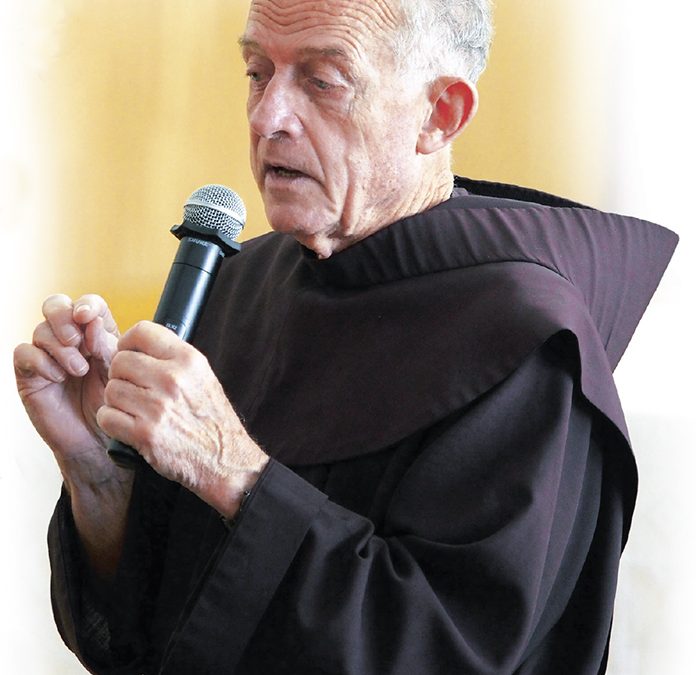
Much-Loved Friar Returns To S’pore To Mark Jubilee
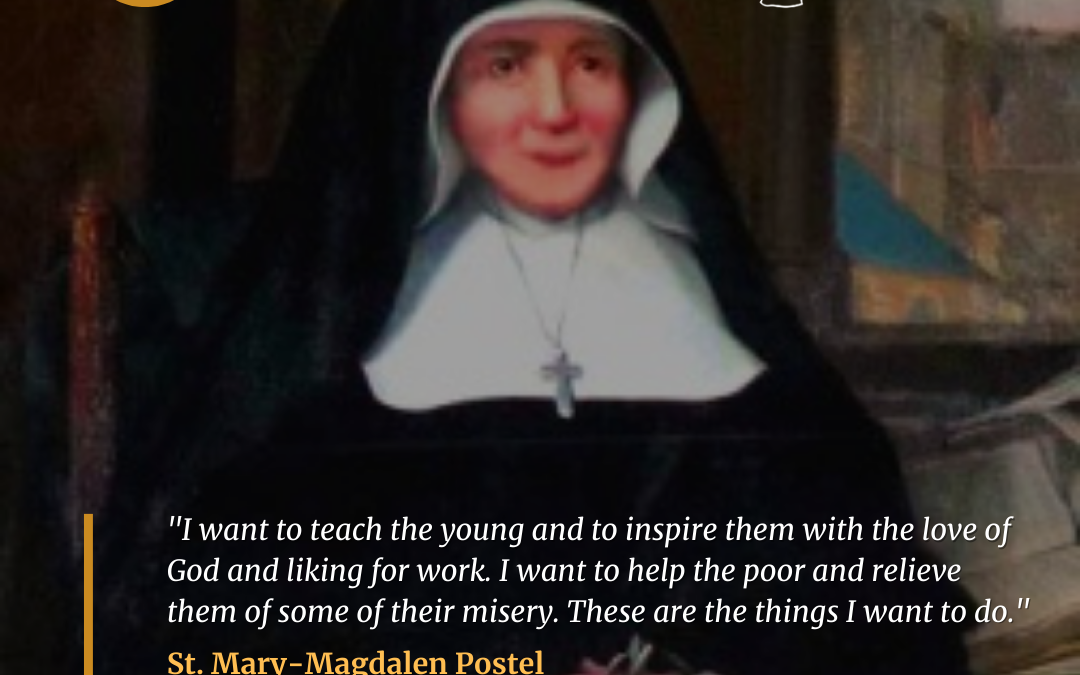
Saint Mary-Magdalen Postel (1756-1846)
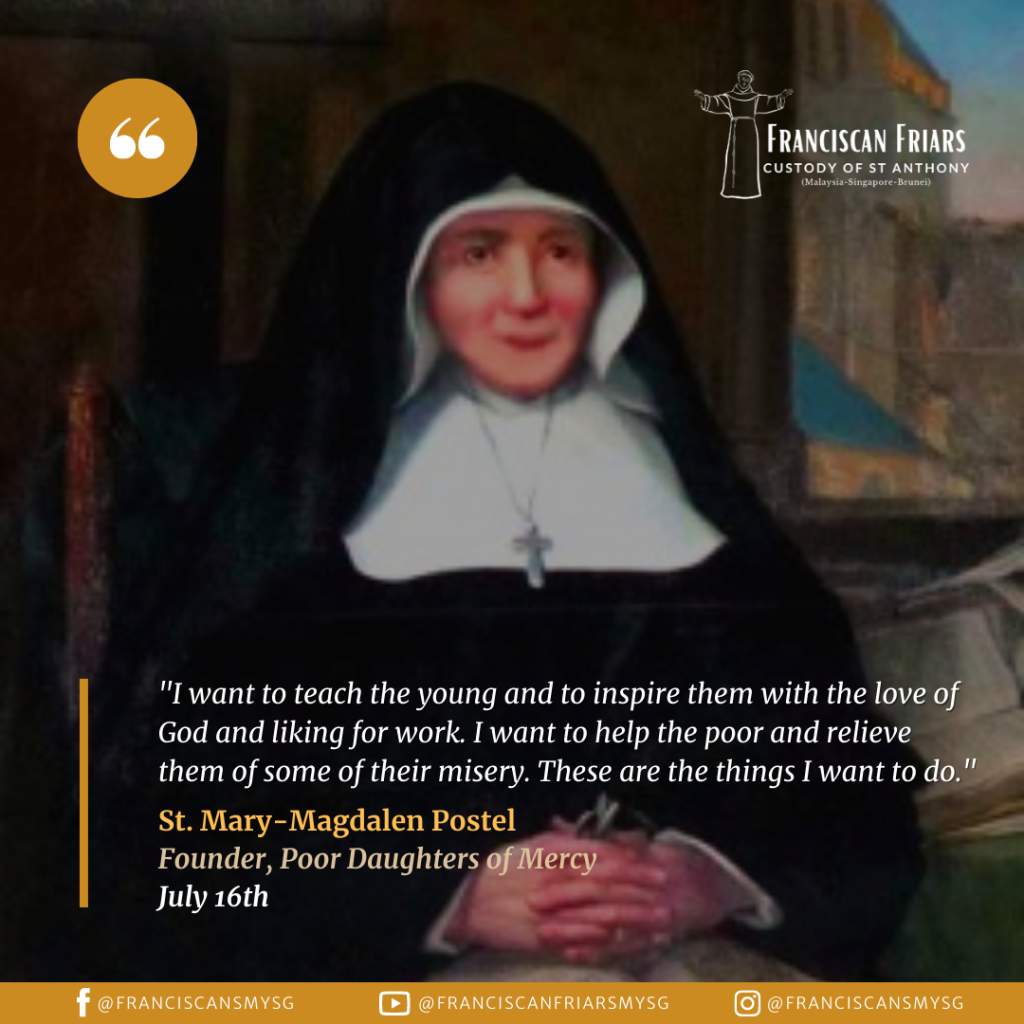
Julia Frances Catherine Postel was born in a small French town near Cherbourg. After studying in a Benedictine convent, she returned home to teach school, though privately she dedicated herself to God’s service. Her calling became clear, with the onset of the Revolution, when her parish priest was forced to go underground. Postel pus herself at his service, setting up a secret chapel in her home, where clandestine services could be conducted. She herself undertook religious duties, such as carrying consecrated Hosts to administer to the dying. Thus, as Pope Pius X later commented, she served as a veritable “maiden priest.”
As the persecution receded, Postel devoted herself to repairing the local church, offering religious instruction, organizing prayer guilds, and performing works of mercy. In 1807, she determined that what she really wanted to do was to teach children, and for this she should organize a religious congregation. She joined with three companions in taking religious vows. Observing the rule of the Third Orde of St. Francis, they called themselves the Poor Daughters of Mercy. She became Mother Mary-Magdalen.
Thirty years later, their motherhouse was transferred from Cherbourg to a former Benedictine abbey in Courtance. Their new bishop urged them to replace their former rule with that of St. John Baptist de la Salle, and they changed their name to the Sisters of the Christian Schools of Mercy. After the order struggled for some years of dire poverty, the bishop urged them to disband. But Mother Mary-Magdalen persisted, and eventually their fortunes turned.
She died on July 16, 1846 at the age of eighty-nine. She was canonized in 1925.
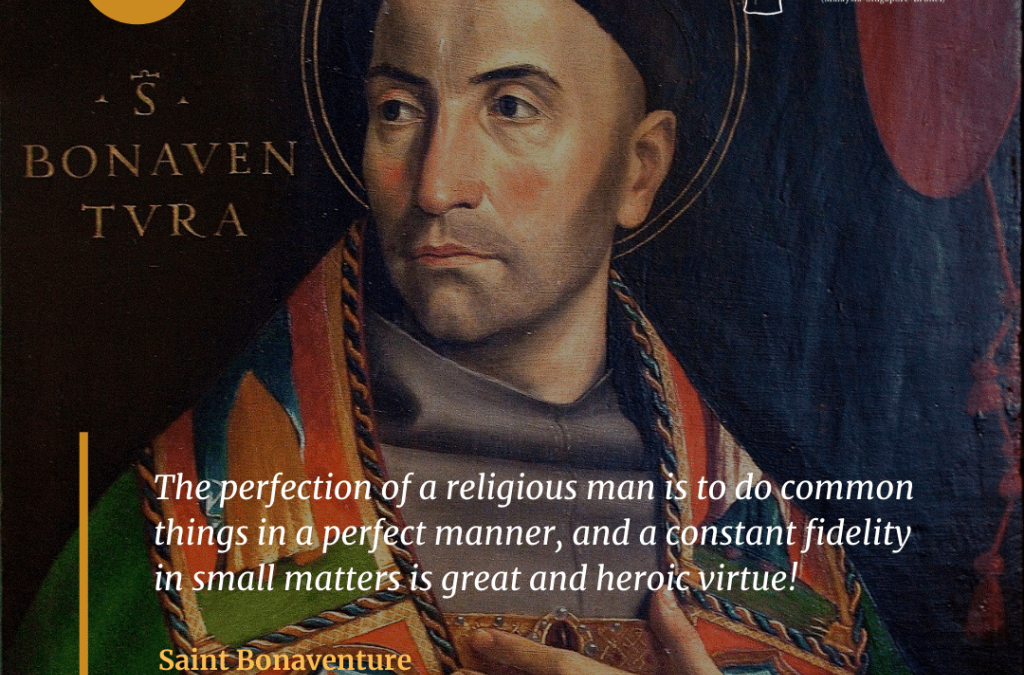
Saint Bonaventure (1221 -1274)
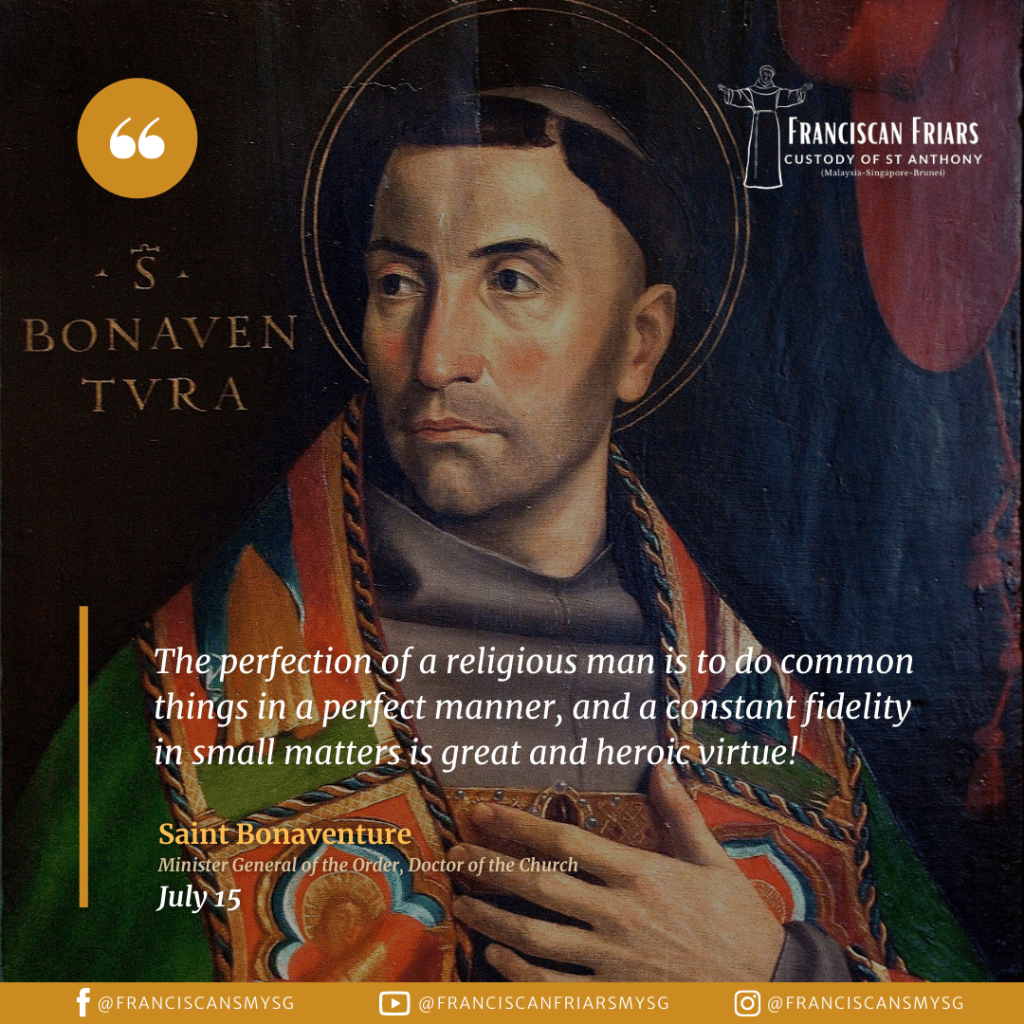
Bonaventure, who was born to a wealthy family in Orvieto, joined the Franciscans around 1238 in the midst of his studies at the University of Paris. St. Francis had died only some dozen years before, but already his order was rapidly changing the face of the Church in Europe. To Bonaventure, it seemed that the Franciscan Order “was not invented by human providence but by Christ. In it, the learned and the simple lived as brethren.”
Bonaventure himself was definitely one of the learned. Franciscan simplicity might not have seemed an attractive fit for such a scholar. In fact, Francis had held learning in great esteem so long as it was subordinated to the pursuit of holiness. In this spirit, Bonaventure received support from the Order to continue his studies. In 1257, along with his Dominican counterpart, St. Thomas Aquinas, he received his doctorate in theology.
Rather than pursue the life of an academic theologian, however, Bonaventure was immediately elected to serve as minister-general of the Friars Minor—a role in which he left a lasting mark. During a time of contending factions within the order, Bonaventure tried deftly to steer a middle course between the radical freedom of Francis and the disciplined order of a religious community. To reinforce his moderate interpretation of the Franciscan charism, he composed an influential life of St. Francis. For his successful efforts, he would become known as the Second Founder.
“The perfection of a religious man is to do common things in a perfect manner, and a constant fidelity in small matters is great and heroic virtue!”
– St. Bonaventure
He wrote a number of other important works, including his mystical treatise The Journey of the Mind to God. This was his attempt to translate Francis’s identification with Christ into philosophical terms—a journey of the soul along the path of holiness, leading from contemplation of the created world to an ever-deepening contemplation of the spiritual order, and progressing ultimately toward the goal of union with God.
In 1265, Bonaventure respectfully declined an appointment as archbishop of York. In 1273, however, Pope Gregory X ordered him to accept the title of cardinal-bishop of Albano. When papal legates arrived to present him with his red hat and insignia of office, he kept them waiting while he finished washing the dishes. Summarizing his spirituality, he observed: “The perfection of a religious man is to do common things in a perfect manner, and a constant fidelity in small matters is great and heroic virtue!”
Bonaventure died in 1274. He was canonized in 1482 and later declared a Doctor of the Church. In recognition of his angelic virtue, he is known as the Seraphic Doctor.
Source : The Franciscan Saints (Franciscan Media)
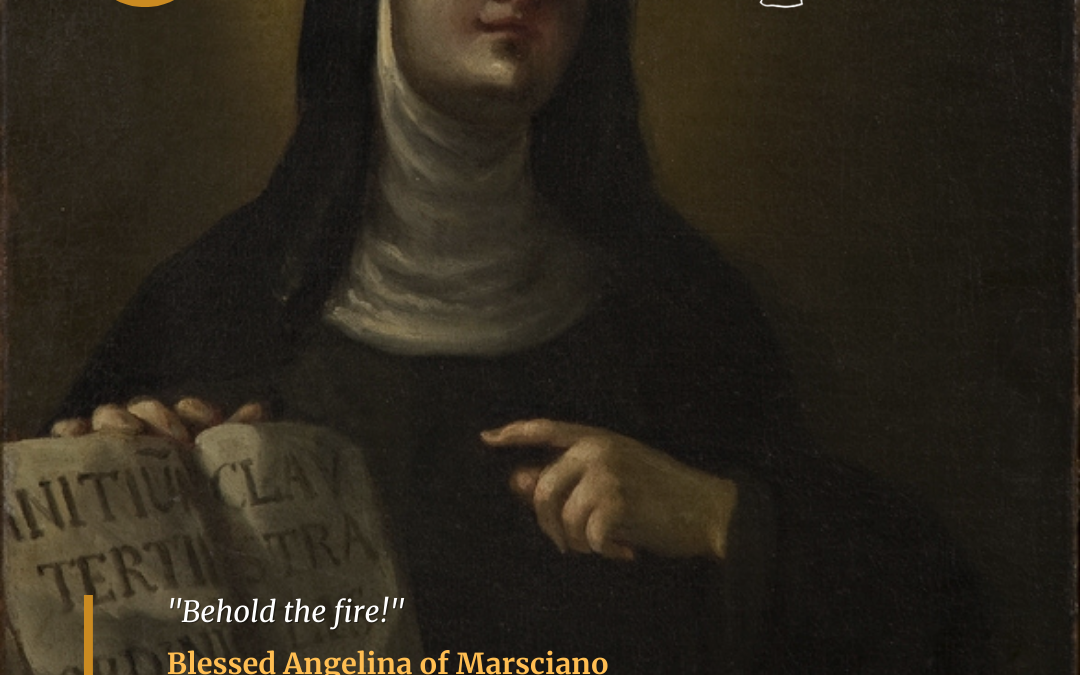
Blessed Angelina of Marsciano (1377-1435)
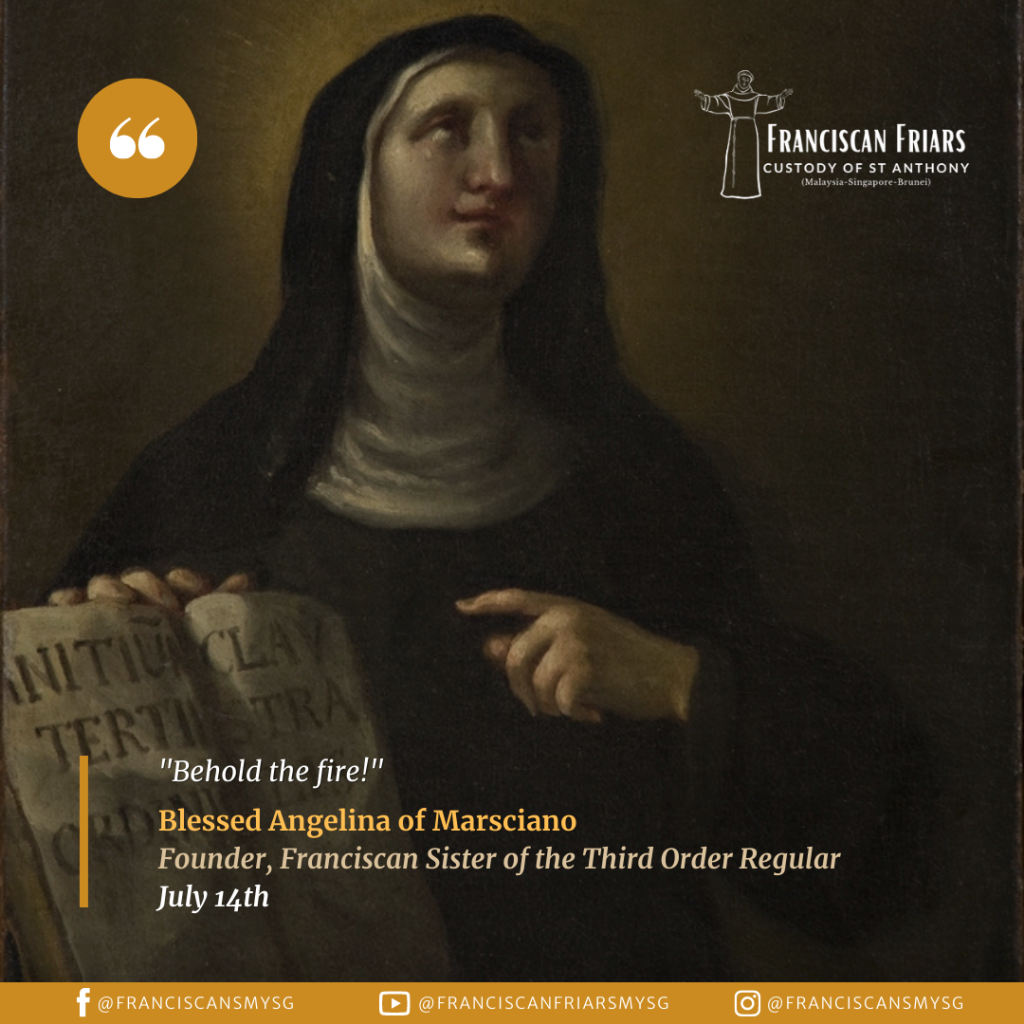
Angelina, who was raised in a noble family, married the count of Civitella when she was fifteen. Two years later, her husband died, and Angelina inherited his title and castle. Straightaway, she put on the habit of a Franciscan tertiary and gathered her female attendants into a religious community. Together they began to travel throughout the region, calling sinners to conversion and extolling the virtues of virginity. So effective were her paeans to virginity that she was deemed a threat to civil order. Placed under arrest, she was denounced as a witch (because of her sway over young girls) and a heretic (because of her supposed rejection of marriage). Yet, when she was brought before King Ladislas of Naples, who was fully prepared to have her burned, she mounted an effective defense. “If I have taught or practiced error,” she said, “I am prepared to suffer the appropriate punishment.” With that she drew back her cloak to reveal burning embers, hidden within. The king was sufficiently impressed that he spared her the worst punishment. Still, he exiled her from the kingdom.
On pilgrimage to Assisi, Angelina received a vision that she should found an enclosed monastery of the Third Order Regular of St. Francis in Foligno. In 1397, with support from the local bishop, she accomplished this plan. Other communities gradually affiliated with her convent, and they were recognized as a new congregation in 1428. Angelina died on July 14, 1435. She was beatified in 1825.
Source : The Franciscan Saints (Franciscan Media)